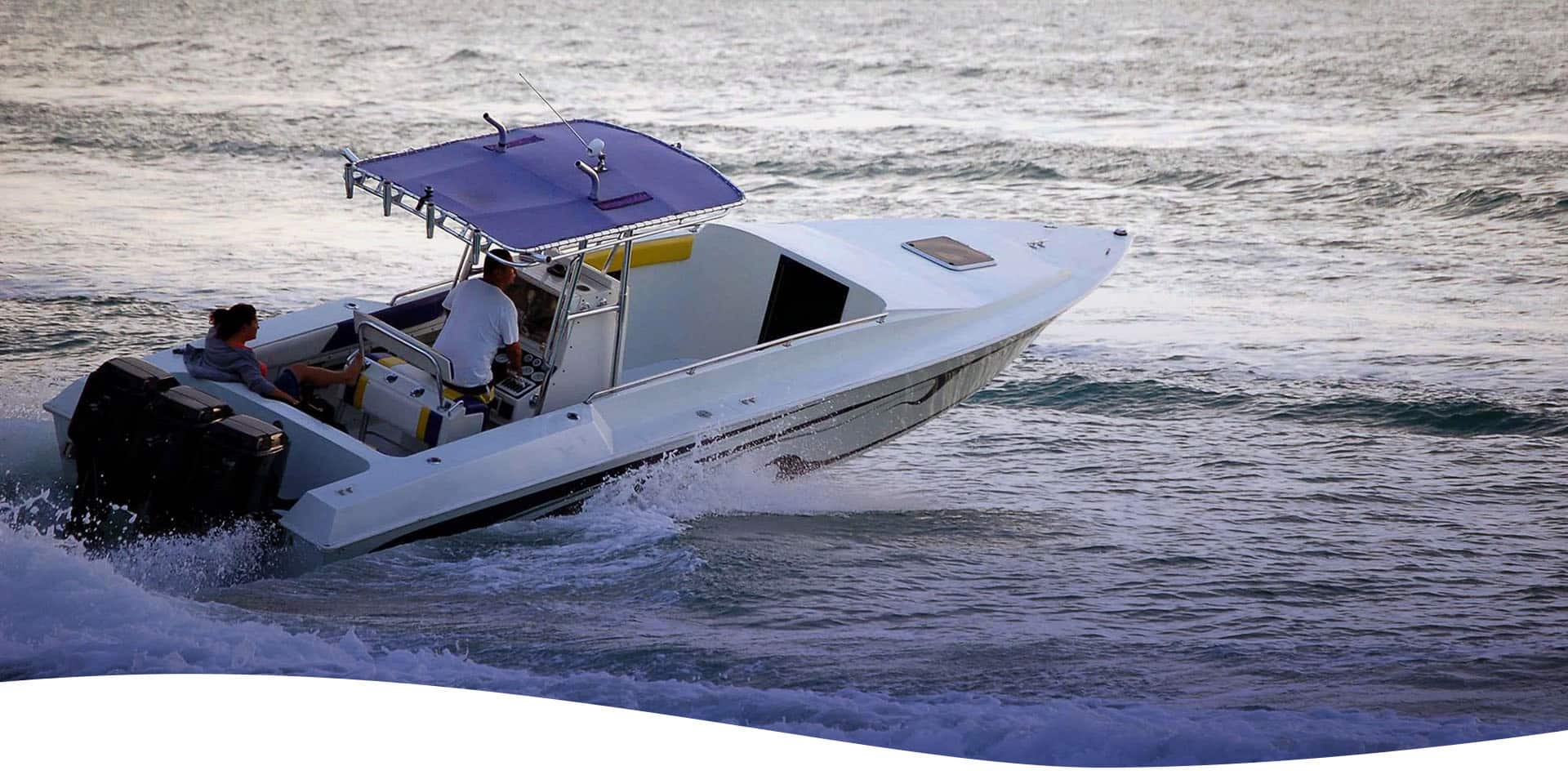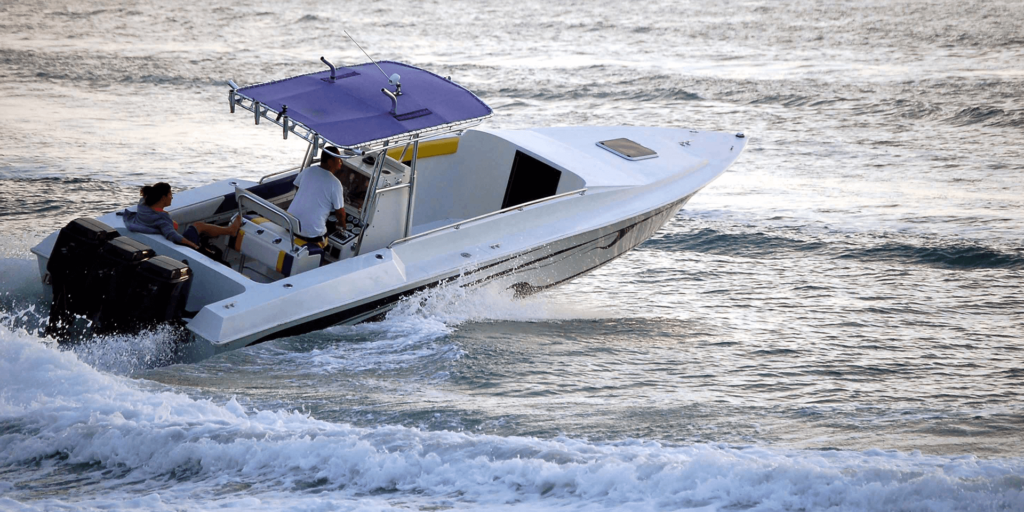Quick Navigation:
- The Importance of Regular Boat Maintenance
- Boat Maintenance by Part
- Boat Maintenance by Time
- Boat Maintenance by Type of Boat
- DIY vs. Professional Boat Maintenance
Whether you're a new boat owner or have been boating for years, knowing how to maintain a boat is crucial. Properly maintaining your boat will help it stay in good condition for longer, allowing you to get more years of enjoyment and adventure on the water. Learn more about the importance of boat maintenance so you can begin maintaining your vessel from the moment you put it in the water.
The Importance of Regular Boat Maintenance
Most machines and vehicles require regular maintenance to continue running properly. Boats are no different, though they may require more consistent and in-depth maintenance than most cars. But with the proper steps, you can enjoy these benefits:
- Saving money: Since boats are a big investment, maintaining them can be financially rewarding. Keeping your boat in prime condition helps maintain its value and ensures it's operating correctly.
- Getting to know your boat: Conducting regular maintenance also helps you gain a better understanding of your boat and how it runs. Knowing your boat allows you to note anything unique or specific that your vessel does or needs to operate smoothly. Regular maintenance helps you quickly notice potential issues, enabling you to take action before the small problem requires a costly repair.
- Ensuring safety: Maintaining your boat also ensures it's safe to use each time you take it out on the water. Sticking to a basic boat maintenance checklist can give you confidence in your boat and peace of mind when using it with friends and family.
Knowing how to maintain your boat will make a significant difference in how your vessel runs and how long it lasts. Your maintenance checklist will vary depending on the type of boat you have and how much maintenance you perform yourself. You'll also need to conduct various maintenance tasks at various intervals. It's important to create your maintenance routine based on your boat's needs to cover all the basics.
Boat Maintenance by Part
Every part of your boat requires maintenance. Most vessels have many of the same parts, but they may be unique to the type of boating you do. While these boat maintenance tips are a great start, you should also consider what your specific vessel needs. To ensure each part of your boat is properly maintained, you should care for each part separately.
Here are some boat maintenance tips for the main components:
Engine and Propeller
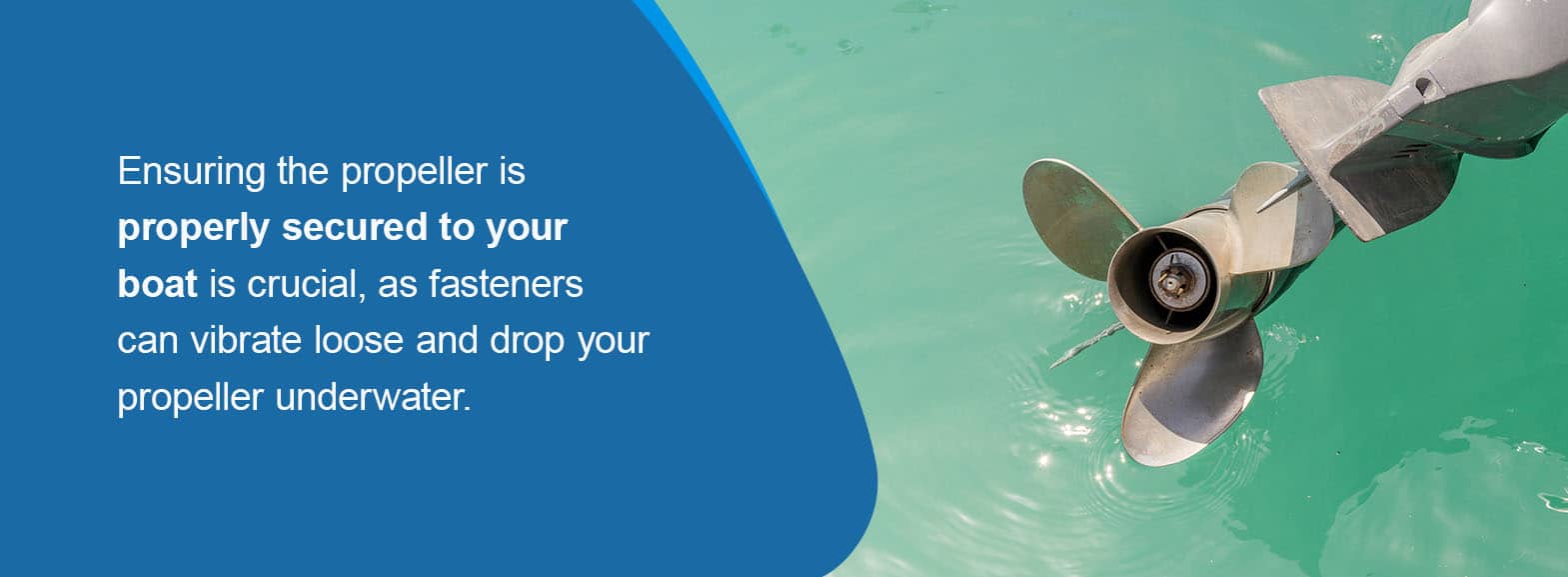
Your boat's engine and propeller allow your boat to move, and if they aren't maintained, your boat may struggle to run. Routine maintenance can help prevent your engine from breaking down unexpectedly.
One of the best boat maintenance tips regarding your engine is to check the oil and change it when necessary. Your boat manual will give you more specific information regarding what oil to use and how frequently to change it, though it's best to check your oil levels before taking your boat out. If your oil levels are low, top it off before going anywhere.
Be sure to also check for oil and fuel leaks, lubricate any moving parts and visually inspect hoses and lines.
A well-maintained propeller can also make a significant difference in how efficiently your boat runs. Ensuring the propeller is properly secured to your boat is crucial, as fasteners can vibrate loose and drop your propeller underwater.
Check the propeller blades for dents and other damage, as this can affect the propeller's performance. Also, look for any fishing line or debris that may be wrapped around the propeller. Lubricate the propeller shaft regularly.
Hull and Topsides
The hull refers to the body of your boat, including the bottom that sits in the water and the topsides that sit out of the water. Hull maintenance mostly consists of keeping it clean, polished and sealed. Your boat will cut through the water more efficiently when your hull and topsides are clean.
Hull maintenance depends on what material your boat is made with. Here are a few common hull materials and how to maintain them:
- Fiberglass: Fiberglass has become one of the most common boat materials. Fiberglass boats have a gel coat that protects the material from the elements. Over time, this material can oxidize and become cloudy and chalky. Cleaning the hull with fresh water is the best way to maintain it. You should also wax fiberglass a couple of times a year to maintain its shine and refresh its protective coat.
- Aluminum: Since aluminum is metal, it's more prone to corrosion. To prevent corrosion on an aluminum hull, avoid letting the boat sit in the water unless it's in use. Keeping the hull dry will help maintain the integrity of the aluminum. Aluminum cleaners should be used to regularly clean the material. These cleaners can also polish the hull, creating a protective coating.
- Wood: Wooden boats are less common than fiberglass and aluminum, as they require much more maintenance. Since wood is highly susceptible to water damage, a wooden hull needs to be kept flawlessly clean. You'll also need to ensure this material is properly sealed to prevent water from seeping into the wood.
Regardless of the material, be sure to check for damage, abrasions, cracks, signs of structural issues and other potential problems around the hull.
Electrical Systems
Your boat's electrical system and battery are essential for running your boat. Your electrical lines can degrade with wear and debris buildup. Regularly cleaning and visually inspecting electrical lines can help slow deterioration and ensure connections are correct.
Replace and repair damaged or worn lines as needed to prevent your system from breaking down. Damaged electrical lines can be a major safety hazard, so keeping your system in good shape is important.
The boat battery also needs to be kept clean from buildup. The battery components can corrode if exposed to water and other elements, so be sure to inspect them frequently.
Plumbing and HVAC
If your boat has running water or an HVAC system, you'll need to maintain the piping and hookups. This part of your boat maintenance cleaning checklist should also include the bilge pump. Your bilge pump removes excess water from your boat to help it stay afloat. If your bilge pump gets clogged or is dirty, water would collect in your boat and could cause additional issues. Ensure the intake and output lines are clear and everything is flowing properly.
Canvas and Upholstery
Canvas is often used for boat covers to protect the interior. Upholstery refers to the material on your seats and possibly the flooring. Maintaining these parts helps keep up the appearance of your boat.
Dirt, mildew, sweat, salt, sand and other elements can increase wear and tear on the upholstery and canvas. Regularly cleaning these materials with soap and water — or per the manufacturer's suggestions — can help maintain the appearance and comfort of the upholstery.
Another way to protect the canvas and upholstery is to store these materials somewhere dry when not in use. You might remove the seat cushions when storing your boat for winter so they get a break from the elements.
Boat Maintenance by Time
You should perform certain boat maintenance tasks at different intervals. There are maintenance tasks that should be completed each time you use your boat, while others only need to be done once or twice a year.
The Boat Owner's Association outlines a checklist for boat maintenance based on how many hours your boat has been run — essentially, the more often you use your boat, the more often you should perform the necessary maintenance.
Most maintenance tasks should be performed every use, monthly or yearly. Here's what to consider at each of these intervals.
Maintenance for Every Use
Some tasks must be completed before or after each use to keep the parts in good condition and ensure the boat is safe to take on the water. Generally, every time you use your boat, you should:
- Check oil and fuel levels and refill as needed.
- Ensure engine and propeller mounts are secure.
- Check for visual damage and listen for rattling or noises that could indicate problems.
- Clean the hull after boating.
- Ensure electrical systems are operating properly.
- Check the bilge pump.
Monthly Boat Maintenance Checklist
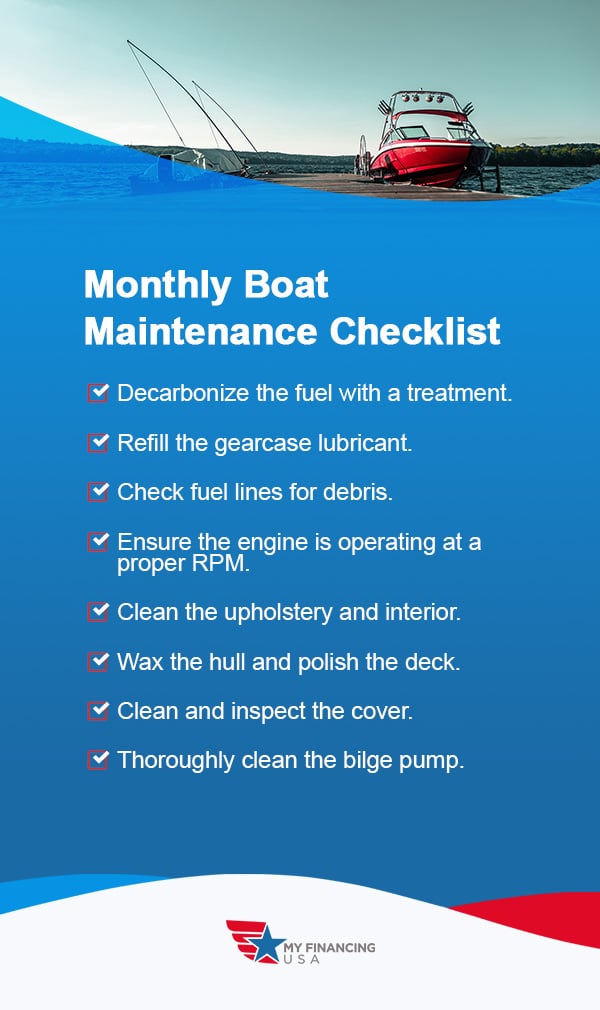
On a monthly basis, perform the following boat maintenance tasks:
- Decarbonize the fuel with a treatment.
- Refill the gearcase lubricant.
- Check fuel lines for debris.
- Ensure the engine is operating at a proper RPM.
- Clean the upholstery and interior.
- Wax the hull and polish the deck.
- Clean and inspect the cover.
- Thoroughly clean the bilge pump.
Annual Boat Maintenance Checklist
Complete these maintenance tasks once or twice a year or boating season:
- Lubricate moving parts and grease points.
- Check and refill power trim fluid.
- Clean and protect electrical components.
- Tighten all bolts and fasteners.
- Replace filters.
- Change the oil.
- Prepare for storage.
Boat Maintenance by Type of Boat
Different types of boats have unique maintenance needs based on factors like design and use. It's best to follow the owner's manual for specific maintenance instructions, but here are some general tips to keep in mind for different types of boats.
Pontoon Boat Maintenance Tips
Maintenance for pontoon boats varies a bit from other types of boats because they use two long aluminum tubes underneath either side of the boat to displace water and provide buoyancy. Pontoons have flat decks, making them ideal for cruising and various other water activities.
Much of the maintenance on a pontoon boat involves caring for the aluminum tubes, which should be done monthly. Be sure to keep them clean and free of debris like algae, water scum and zebra mussels. Soap and water can go a long way, though you may want to use an aluminum cleaner for the best results.
When creating your pontoon boat maintenance checklist, be sure to factor in additional time for cleaning the furniture, upholstery and flooring. The flat deck allows for more furniture space, inherently requiring more cleaning time.
Bass Boat Maintenance and Care
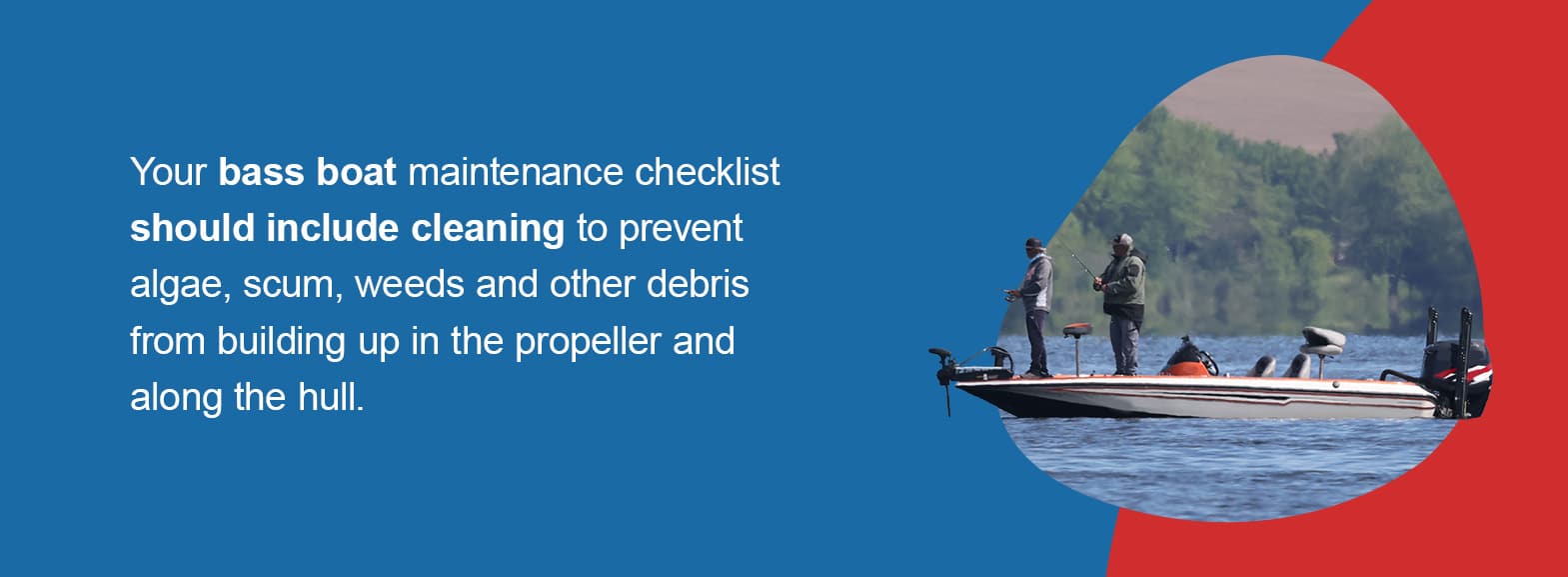
Bass boats are designed for bass fishing. They typically feature a flat deck, aerated live wells to store caught fish and an outboard engine, allowing for an optimal fishing experience. Bass boats are also lower to the water, which means more of the hull is underwater.
Since these boats are commonly used in freshwater, your bass boat maintenance checklist should include cleaning to prevent algae, scum, weeds and other debris from building up in the propeller and along the hull. You'll also need to clean out the live wells and maintain the aeration system.
As with any boat, aluminum bass boat maintenance should be performed more often to protect the metal. Bass boat annual maintenance is crucial to refreshing your vessel after using it for the season.
Yearly bass boat maintenance costs vary from boat to boat, especially depending on where you boat, how often you go out and how much maintenance you perform yourself. Expect to pay at least 10% of your vessel's cost on maintenance.
Saltwater vs. Freshwater Boats
Saltwater is especially corrosive for boats — particularly metal parts. If salt water is left to sit on your boat, it can cause significant damage. If you're boating in saltwater, you'll need to clean and rinse your boat more often to maintain good condition. You should also flush your motor after each use to prevent salt water from sitting in the motor between uses.
Freshwater is less harmful to boats, but you should still regularly clean and wax the hull. Typically, freshwater boat owners can get away with performing maintenance tasks less frequently than saltwater boaters. For example, while you may not need to do it every time you use your boat, you should flush your engine every month to clear it of debris and buildup.
DIY vs. Professional Boat Maintenance
You can do many of the tasks necessary to adequately maintain a boat yourself. For example, much of the cleaning, waxing, oil changes, visual inspections and small repairs can typically be done from your dock.
Major repairs, thorough inspections and other complex maintenance needs are best performed by a professional to ensure everything is done properly. Some boaters may take their boats to a repair shop, while others may be docked at a marina where they handle numerous maintenance tasks for you.
How much it costs to maintain a boat will depend on what you can DIY and what you have professionally done. Professional maintenance services will cost more, though they're typically more thorough and reliable.
Apply for a Boat Loan with My Financing USA
Purchasing a boat is a significant financial decision and investment. Most prospective boat buyers use financing options like loans to purchase their boats. At My Financing USA, you can get a boat loan online through a quick and easy application process. We can connect you with a lender that will finance your boat purchase, even if you have poor credit. We also offer refinancing options for current boat owners. My Financing USA stands out from other competitors because of features like our boat warranty protection and extended service contracts.
Fill out an application to get started or contact us for more information!

Additional Resources on Boating:
- Guide to Different Types of Boats
- Best Places to Go Boating
- Best Boating Activities
- Questions to Ask Boat Dealer Before You Buy
- Costs of Boat Ownership
- How to Buy a Boat Slip

